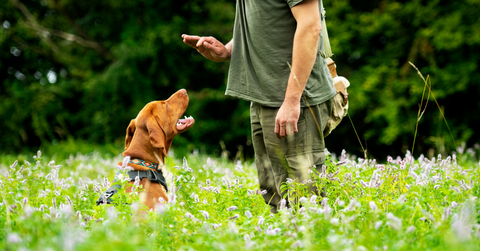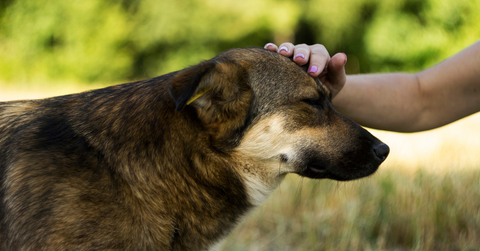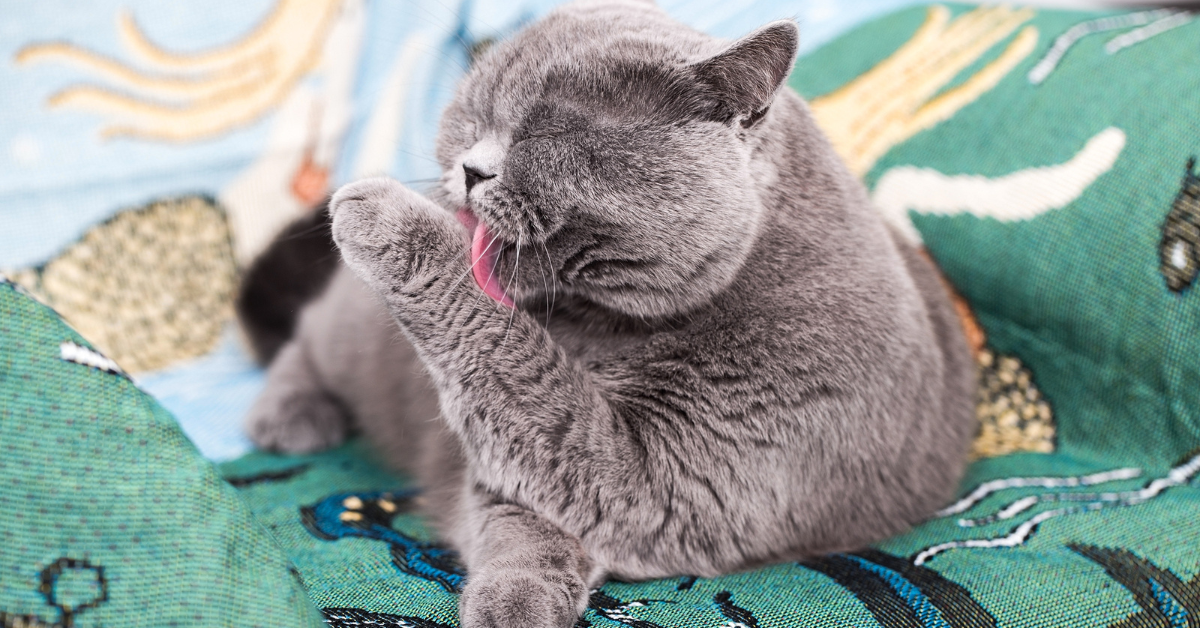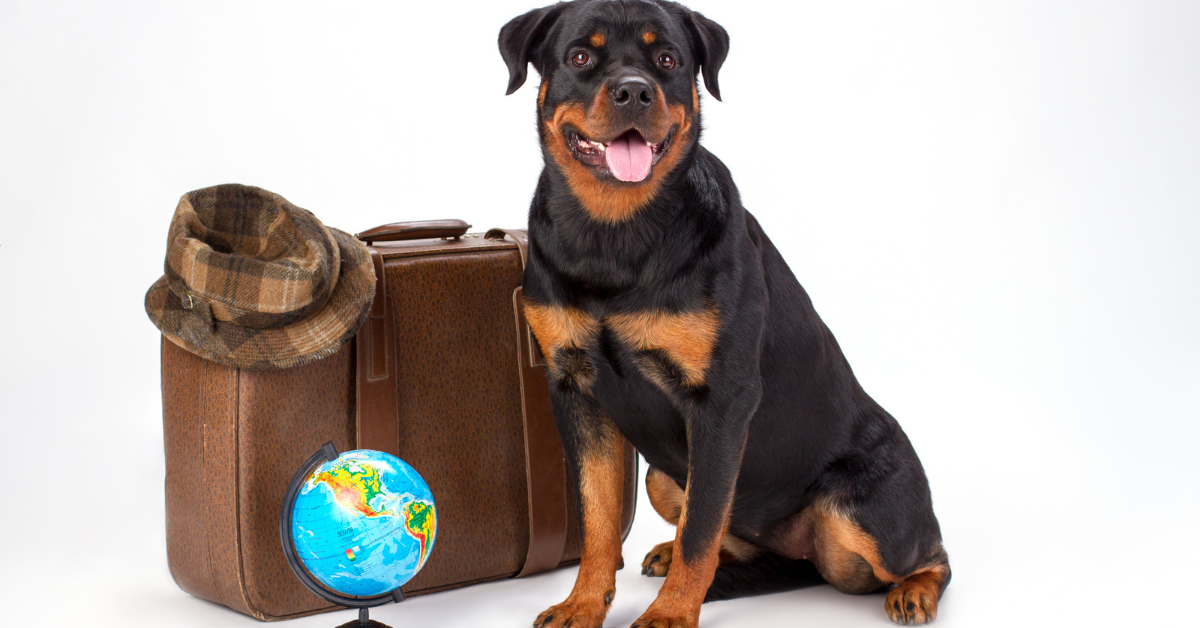How to Train a Dog with Positive Reinforcement
Are you planning to train your dog in a positive way that fosters trust and good behavior? Positive reinforcement is a powerful approach that rewards your dog’s good actions, resulting in a happier pet and a stronger bond between you.
This article highlights practical steps for training a dog with positive reinforcement. It ensures that your training method is effective and affectionate without overwhelming you with treats or commands.
Understanding Positive Reinforcement Training
But the effectiveness of positive reinforcement in shaping a dog’s behavior isn’t static. It’s measured by whether the rewarded behavior occurs more frequently over time. And as we all know, dogs, like people, have their own likes and dislikes. What might be a high-value reward for one dog might not be so enticing for another. For example, the value of a food reward can be influenced by factors such as the dog’s hunger level. Thus, understanding what your dog finds rewarding is key.
Benefits of Positive Reinforcement Training
Here are several key benefits of when fur parents use positive reinforcement training:
- Enhances Learning and Retention: Dogs are more likely to learn and remember commands or behaviors when trained using positive reinforcement, making learning enjoyable and stress-free.
- Builds Trust and Reduces Fear: This method avoids punishment, which can lead to fear or anxiety. A good dog trained with positive reinforcement tends to trust their handlers more and develop a stronger bond.
- Promotes a Positive Relationship: It strengthens the dog's and its owner's bond by associating training with positive experiences rather than fear of punishment.
- Improves Problem-Solving Skills: Encourages dogs to try new behaviors without fear of punishment, fostering a more creative and confident problem-solving approach.
- Adaptable to Various Situations: Effective across various behaviors, from basic obedience to complex tricks and behaviors.
- Decreases Unwanted Behaviors: Rewarding desired behaviors naturally reduces the occurrence of any bad behavior without the need for harsh discipline.
Implementing Positive Reinforcement in Dog Training

How do you implement positive reinforcement? The process involves creating a calm training environment, minimizing distractions, and focusing on one skill at a time. The goal is to create a training process that you and your dog find enjoyable and rewarding.
Timing is Crucial
When it comes to positive reinforcement training, timing is everything. Delivering the reward within seconds of the behavior is essential for the dog to associate the reward with the correct action. How can you ensure your timing is perfect?
This is where verbal cues come in. Using a verbal cue, like saying ‘yes’ before rewarding with a toy, signals to the dog precisely which behavior earned the reward. Think of it as a small ‘well done’ signal helping your dog comprehend what they did correctly.
Consistency and Repetition
In addition to timing, consistency, and repetition are key in reinforcing desired behaviors and preventing the reinforcement of incorrect ones. This means using the same cues, such as ‘Drop It’ during play or when using toys as rewards, to build self-control in dogs.
Initially, a new behavior should be rewarded each time it is demonstrated. This is what we call continuous reinforcement. Once the behavior is firmly established, you can switch to intermittent reinforcement, which maintains the dog’s motivation with less predictability of rewards. This prevents the overuse of high-value treats and keeps the dog's training process exciting and engaging.
Gradually Shaping Behaviors
Another essential aspect of positive reinforcement training is the gradual shaping of behaviors. This involves progressively breaking down complex behaviors into smaller, manageable actions and progressively reinforcing each step. For example, you might start by rewarding your dog for moving towards their crate, stepping into the crate, and finally lying down in the crate.
You can use a marker signal, such as a clicker or verbal cue, to make this process easier. This can help you observe, mark, and reinforce behaviors that resemble the desired behavior during the shaping process. It’s like guiding your dog through breadcrumbs, where each breadcrumb is a small step towards the final goal.
Identifying and Using Rewards

Positive reinforcement training can effectively include a variety of rewards, such as food rewards, praise and affection, and toys and playtime.
Food Rewards
Food rewards are often the go-to choice in positive reinforcement training and for a good reason. They are usually high-value and can strongly motivate behavior. However, there are a few things to remember when using food rewards. They should be small, enticing, and quickly consumable to keep the dog’s attention on training.
In the early stages of training, high-value treats can increase a dog’s motivation due to their association with positive emotions, leading to faster learning. But, over time, dogs can learn to perform behaviors for verbal praise while still receiving treats occasionally, reducing over-dependence on food rewards. Striking a perfect balance is the objective here.
Praise and Affection
Offering praise and affection alongside other rewards, like food treats, is important to ensure a comprehensive reward package. This approach helps to create a positive and balanced experience for the recipient.
What can make verbal praise a significant part of training? Pairing is the key factor here. Verbal praise can become a practical part of training when paired with primary reinforcers like food or petting, creating a conditioned association that enriches the trainer’s toolkit.
And don’t forget the tone! Delivering praise in a happy, high-pitched tone may enhance its effectiveness as a reinforcer. After all, it’s not just what you say but how you say it!
Toys and Playtime
Toys and play are valuable motivators and can serve as rewards in positive reinforcement training, significantly when the dog’s interest in play exceeds interest in food. What’s the most effective way to use them?
Maintaining the novelty of certain toys by using them exclusively during training sessions can enhance their value as rewards for the dog. Also, keeping playtime during training brief, typically 3-4 seconds, helps to maintain high reinforcement rates and keeps the dog’s focus on training.
Also, don’t forget to observe your dog’s preferred play style and adjust the toy’s visibility to optimize motivation or reduce distractions. The goal is to make training enjoyable and stimulating!
Advanced Positive Reinforcement Techniques
Ready to take your positive reinforcement training to the next level? You can implement several advanced positive training methods, including clicker training, target training, and negative punishment.
Clicker Training
Clicker training for dogs uses a small plastic device that produces a click sound, signaling that a reward will follow the marked behavior. The consistent and immediate signaling of correct behavior in clicker training keeps the dog engaged and strengthens the learning process.
Moreover, markers like clickers communicate the precise moment a dog performs the correct action, ensuring clarity in what behavior is being rewarded. Coupling the clicker with verbal cues and commands can facilitate the transition to a training approach that is less dependent on treats.
Imagine having a secret language with your dog that enhances communication effectiveness as your dog learns!
Target Training
Target training is another advanced technique in positive reinforcement training for training dogs. It involves getting pets to follow a target, which allows the handler to lure them into certain positions and redirect their attention. The target usually consists of a target stick that carries a variety of objects that dogs are taught to touch at the end.
This technique is beneficial in competitive dog sports and complex canine behavior training, as it can instruct dogs to assume various positions or move to specific locations. It is an excellent strategy for directing your dog’s movements and introducing new tricks without needing to handle them physically.
Using Negative Punishment
Finally, let’s discuss negative punishment. This technique involves the removal of a desired stimulus to decrease the likelihood of an unwanted behavior being repeated. This might sound a bit confusing, especially when compared to negative reinforcement, so let’s break it down with an example.
Suppose your dog starts barking for attention. Instead of giving in and providing attention, you walk away, removing the expected reward to reduce the barking behavior. This teaches your dog that certain undesirable behaviors will result in losing access to rewards, aiding overall training. Remember, the key to the effective use of negative punishment is careful timing and consistency.
Improve Dog Training Through Positive Reinforcement
Positive reinforcement dog training involves encouraging desired behaviors through rewards, creating a positive association for the dog. Utilizing positive reinforcement dog training, where desired behaviors are encouraged and rewarded, can significantly enhance the training process.
When a dog performs a desired behavior, such as sitting or staying on command, it is immediately rewarded with treats, praise, or playtime. These positive reinforcement methods ensure that the dog associates the desired behavior with positive outcomes, making it more likely to repeat it in the future.
Not all dogs respond the same way to various rewards, so it may take some experimentation to determine what most effectively motivates your pet. Once a behavior is positively reinforced, dogs learn to repeat it for the desired response. Over time, this approach helps shape their behavior without negative reinforcement, leading to a happier and more cooperative pet.
To successfully implement these training techniques, having the right tools and accessories is essential. With Petmate's comprehensive range of products, we can cater to your dog training needs, providing all the necessary accessories. Shop at Petmate today for the best brands and products for your fur babies.Previous article

Next article

Related posts
View all-

5 Simple Tips to Make Sure Your Cat Drinks Enough Water
Ensuring your cat stays hydrated is important, but it can be challenging since many cats don't drink enough water. Dehydration can lead to kidney disease and other health issues. Fortunately, you can encourage your cat to drink more with a few simple changes. Read Article -

How to Keep Your Cat Busy at Night (So You Can Sleep)
For many cat owners, the quest for a good night's sleep while keeping their feline friends content and engaged can seem like a never-ending battle. Cats, naturally more active at night or early in the morning, often disrupt your sleep schedules with nocturnal activity, whether through playful nature or seeking attention. Read Article -

Should You Bathe Your Cat? Everything You Need to Know About Cat Hygiene
When it comes to cat hygiene, a common question among cat owners is, "Should you bathe your cat?" Understanding how to care for felines, especially bathing cats properly, is crucial for maintaining their overall health. Most cats are fastidious groomers, but specific scenarios like long-haired cats getting dirty or skin irritations, might require a bath.
Read Article -

How to Fly with a Large Dog: Tips and Tricks
Traveling can be challenging, especially when it involves flying with a large dog. Whether your furry friend is a service dog, therapy dog, or simply a beloved pet, understanding the guidelines set by most airlines is crucial. Read Article




